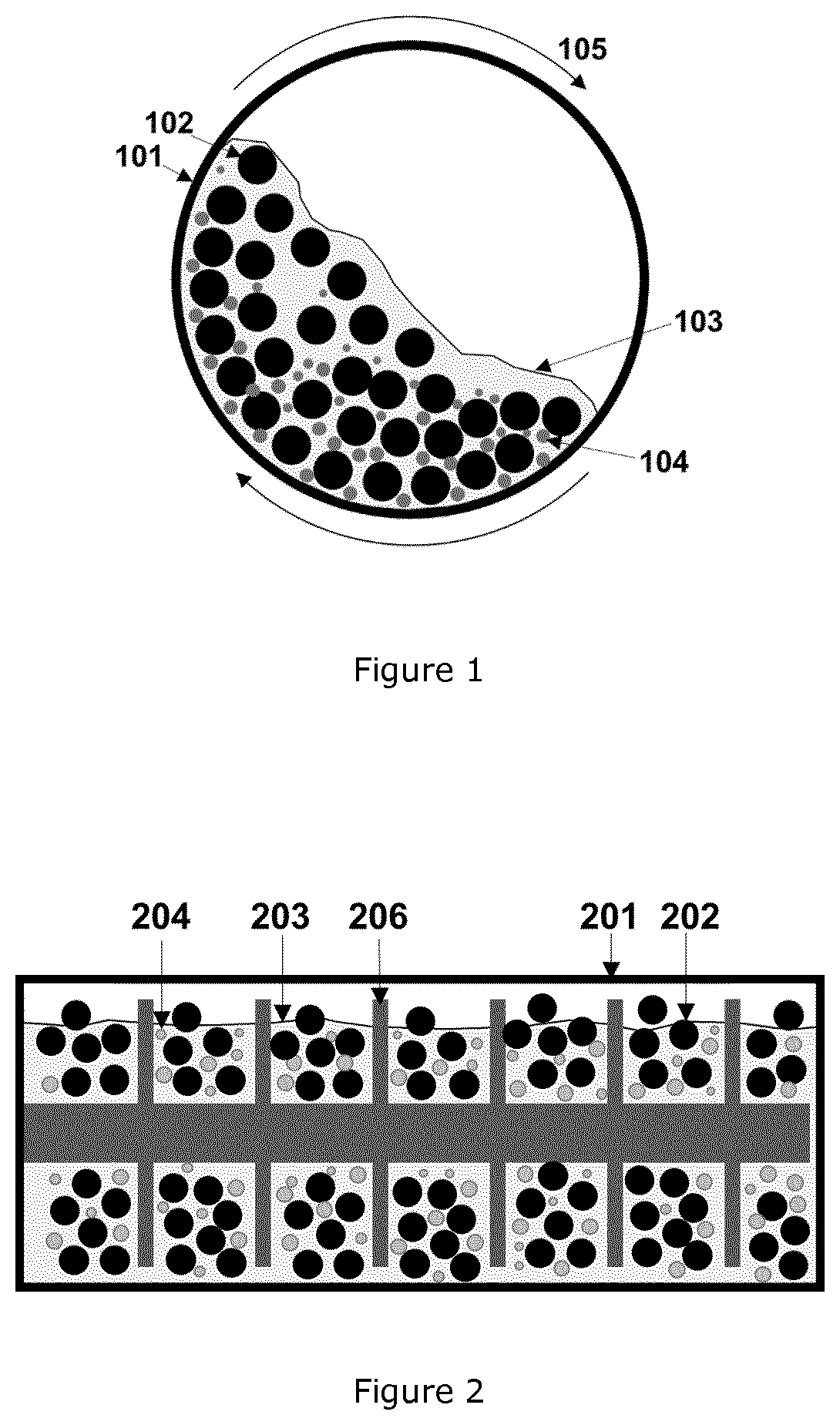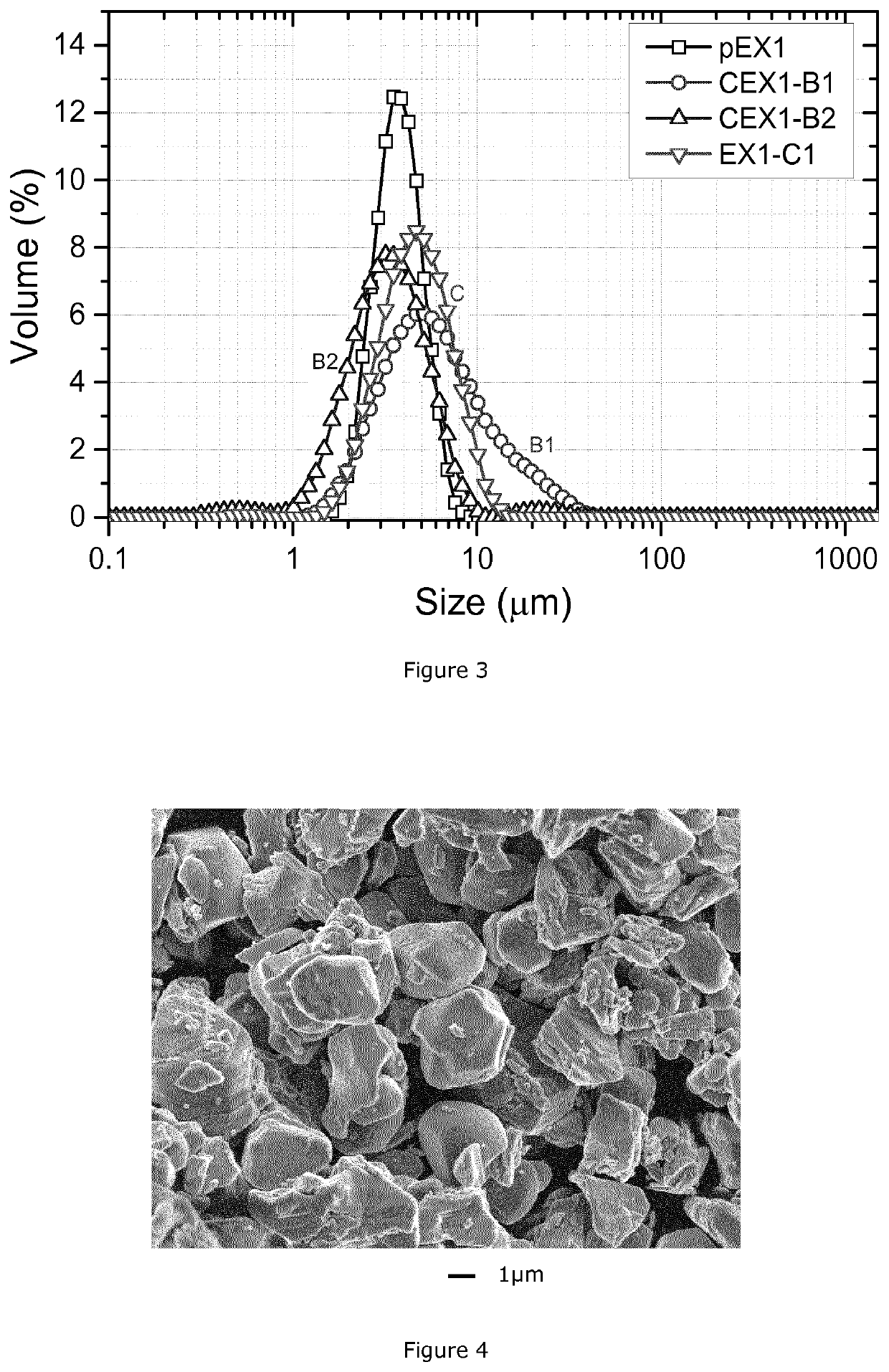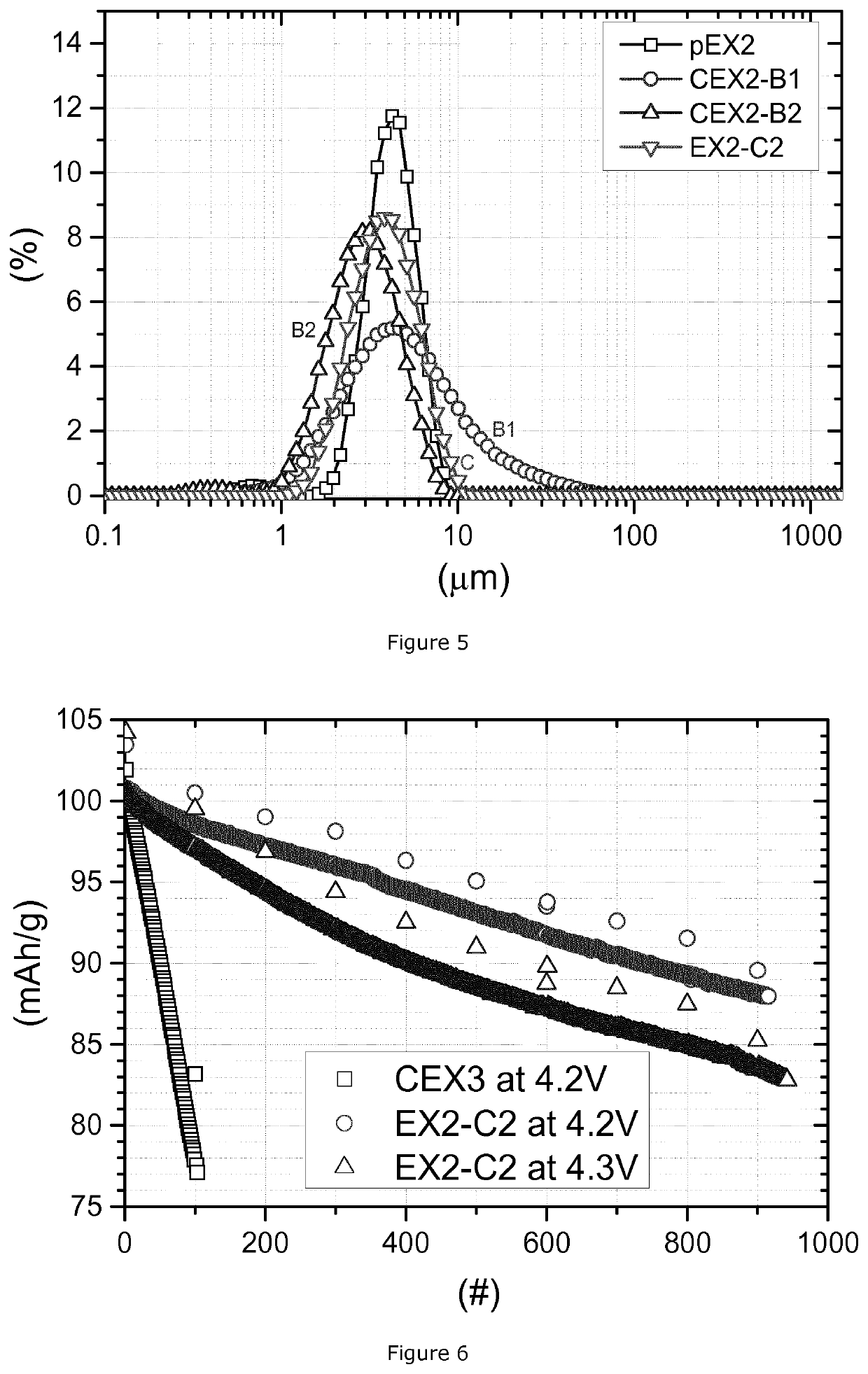Methods for preparing positive electrode material for rechargeable lithium ion batteries
- Summary
- Abstract
- Description
- Claims
- Application Information
AI Technical Summary
Benefits of technology
Problems solved by technology
Method used
Image
Examples
example 3
[0140]This example illustrates that the process has the advantage of a flexible choice of precursor particle sizes. Monolithic NMC compounds, EX3-C1˜C3, having the target formula Li(Ni0.52Mn0.19Co0.24)O2 are obtained through the same process of EX1-C1 except that:
[0141]1) pEX3 (see below) is used as a MTH in step A2),
[0142]2) LiOH.H2O is added to correct the Li stoichiometry to Li / M′=1.06 in step A4),
[0143]3) the 2nd sintering temperatures described in the Table 4 are used in step A5) and
[0144]4) 5.0 mol % Mn doped nano Co oxide (3 mol % Mn vs. Co) is added instead of nano Co nitrate and LiOH.H2O in step C1).
[0145]pEX3, having a composition Ni0.60Mn0.20Co0.20O0.17(OH)1.83, is prepared by a co-precipitation process in a mass production line using a continuous stirred tank reactor (CSTR). A feed of 2M metal sulfate (M′SO4 wherein M′=Ni0.60Mn0.20Co0.20) and a feed of 10M NaOH are supplied to the reactor. Additionally, a flow of 15M NH4OH is added as complexing agent. The residence time...
process example 1
[0153]This example illustrates that the target PSD of the wet ball milled compounds can be achieved by different milling conditions such as ball size, milling speed, and milling time.
[0154]A monolithic high Ni NMC compound having the target formula Li(Ni0.625Mn0.175Co0.200)O2 is obtained through a double sintering process (process A), as discussed in patent application WO2018 / 158078A1 (EP17159083.9), and a wet milling process (process B) running as follows:
[0155]Process A. Preparation of agglomerated intermediate high Ni NMC
[0156]A1) Co-precipitation: an MTH having a composition of Ni0.625Mn0.175Co0.200O0.43(OH)1.57 is prepared by the process described in KR101547972B1. The MTH has a D50 of around 4 μm and is labelled pEX1.
[0157]A2) 1st blending: to obtain a lithium deficient sintered precursor, Li2CO3 and the MTH are homogenously blended with a Li / M′ ratio of 0.85 in a Henschel mixer for 30 minutes.
[0158]A3) 1st sintering: the blend is sintered at 935° C. for 10 hours under an oxyg...
process example 2
[0164]This example illustrates that water is a preferable solvent for a wet milling process and the wet ball milling is superior to an ultrasound treatment. A monolithic high Ni NMC compound with target formula Li(Ni0.6Mn0.2Co0.2)O2 is obtained through a double sintering process (process A) and a wet ball milling process (process B) run:
[0165]Process A. Preparation of agglomerated intermediate high Ni NMC
[0166]A2) 1st blending: to obtain a lithium deficient sintered precursor, Li2CO3 and pEX3 are homogenously blended with a Li / M′ ratio of 0.70 in an industrial Lödige mixer.
[0167]A3) 1st sintering: the blend is sintered at 760° C. with a residence time of 62 minutes in an oxygen containing atmosphere in a RK. The product obtained from this step is a powderous lithium deficient sintered precursor with Li / M′=0.70.
[0168]A4) 2nd blending: the lithium deficient sintered precursor is blended with LiOH.H2O in order to correct the Li stoichiometry to Li / M′=1.01. The blending is performed in ...
PUM
 Login to View More
Login to View More Abstract
Description
Claims
Application Information
 Login to View More
Login to View More - R&D Engineer
- R&D Manager
- IP Professional
- Industry Leading Data Capabilities
- Powerful AI technology
- Patent DNA Extraction
Browse by: Latest US Patents, China's latest patents, Technical Efficacy Thesaurus, Application Domain, Technology Topic, Popular Technical Reports.
© 2024 PatSnap. All rights reserved.Legal|Privacy policy|Modern Slavery Act Transparency Statement|Sitemap|About US| Contact US: help@patsnap.com










